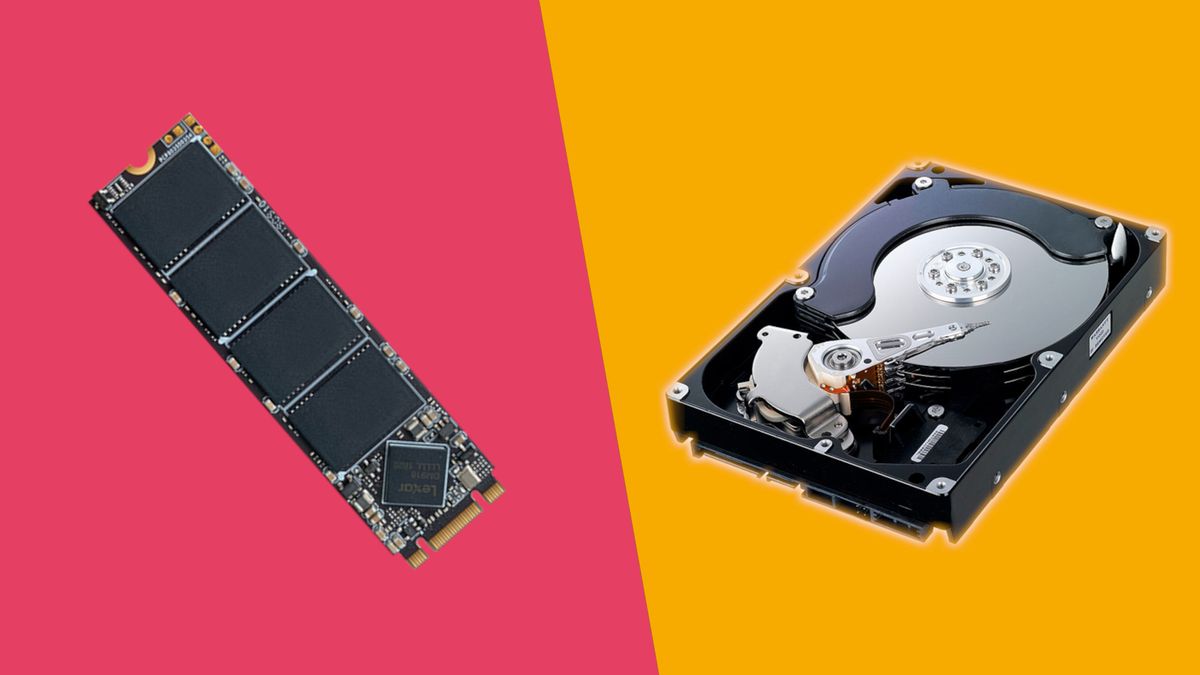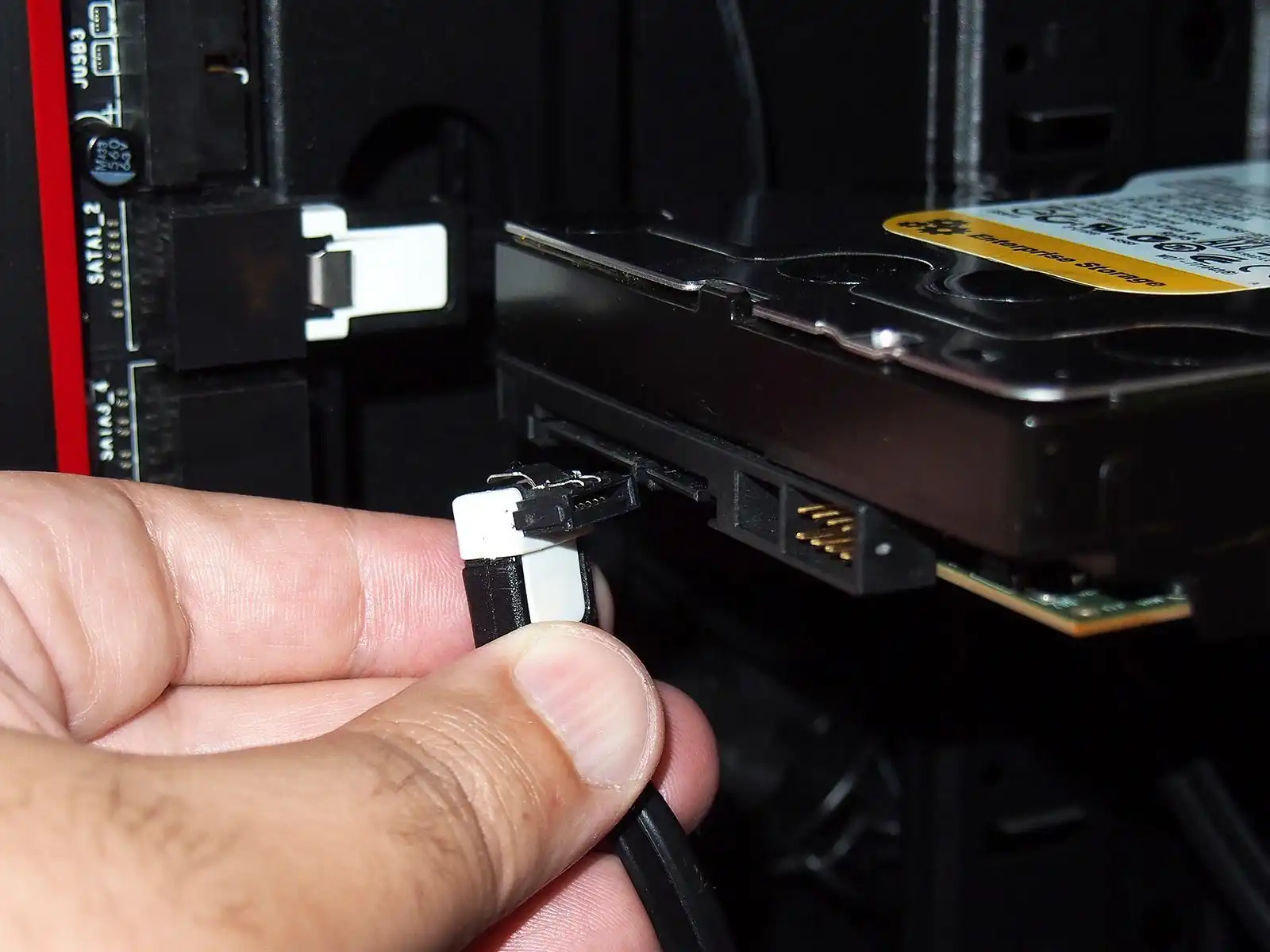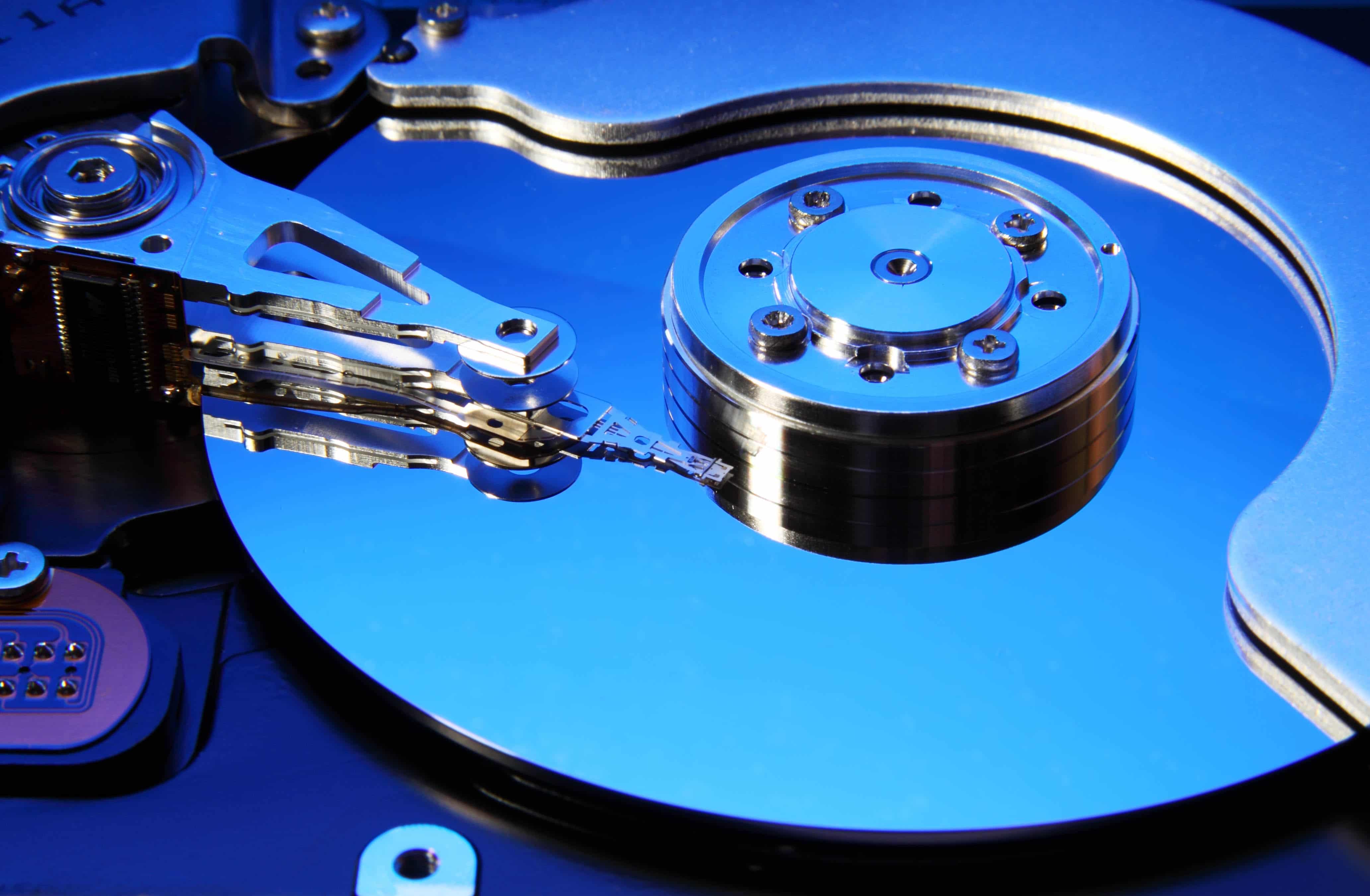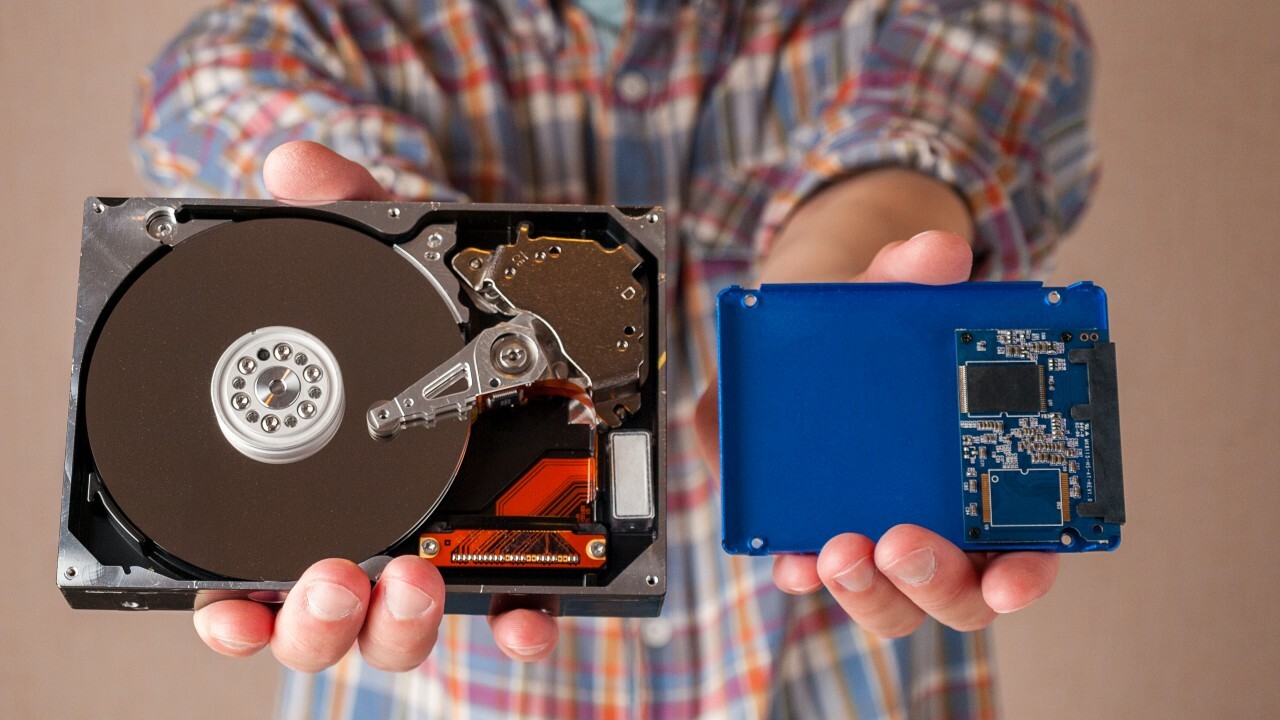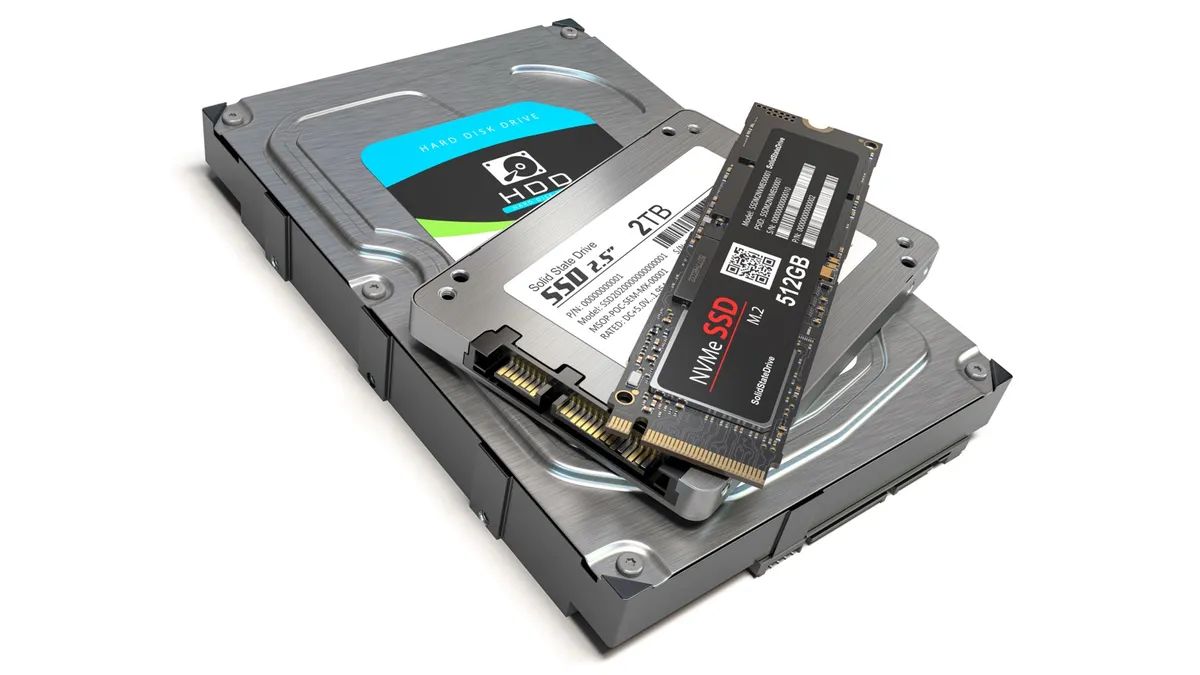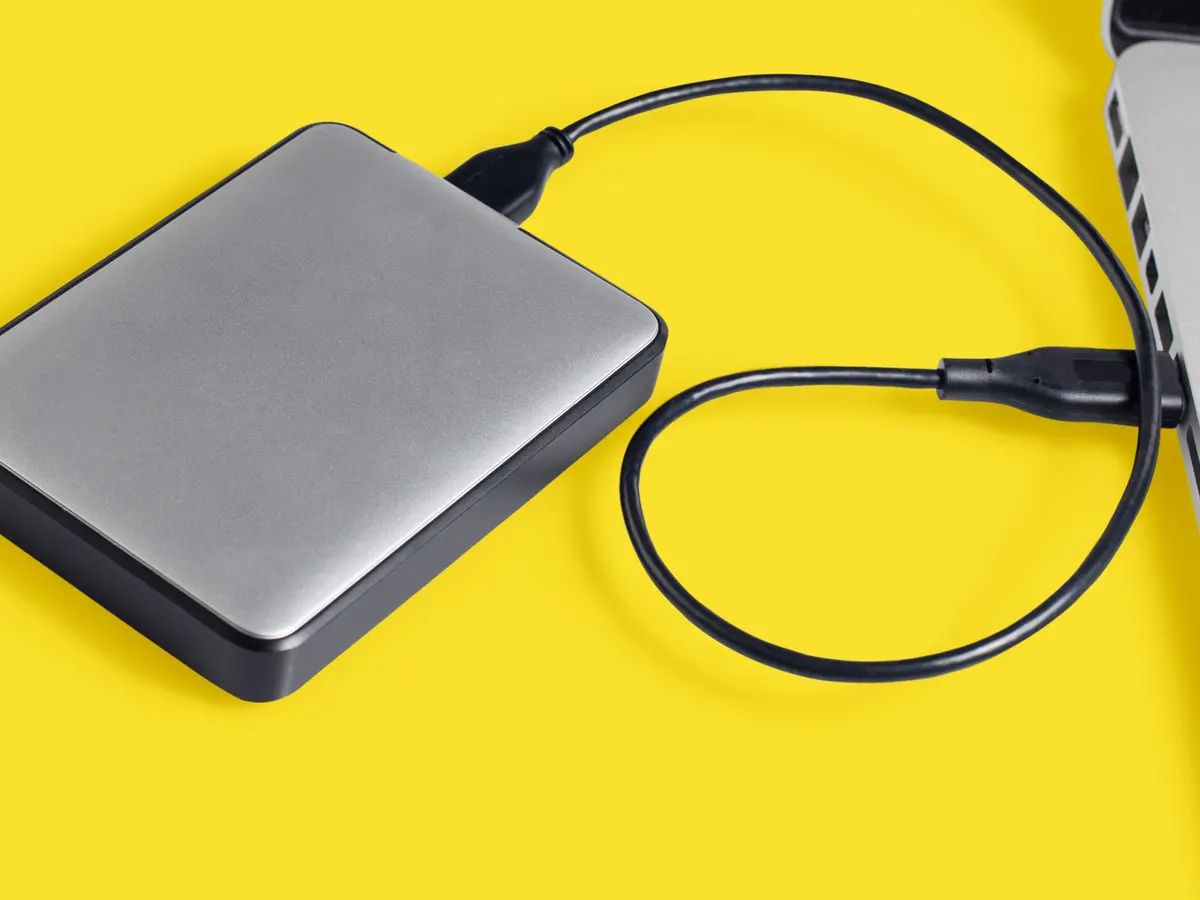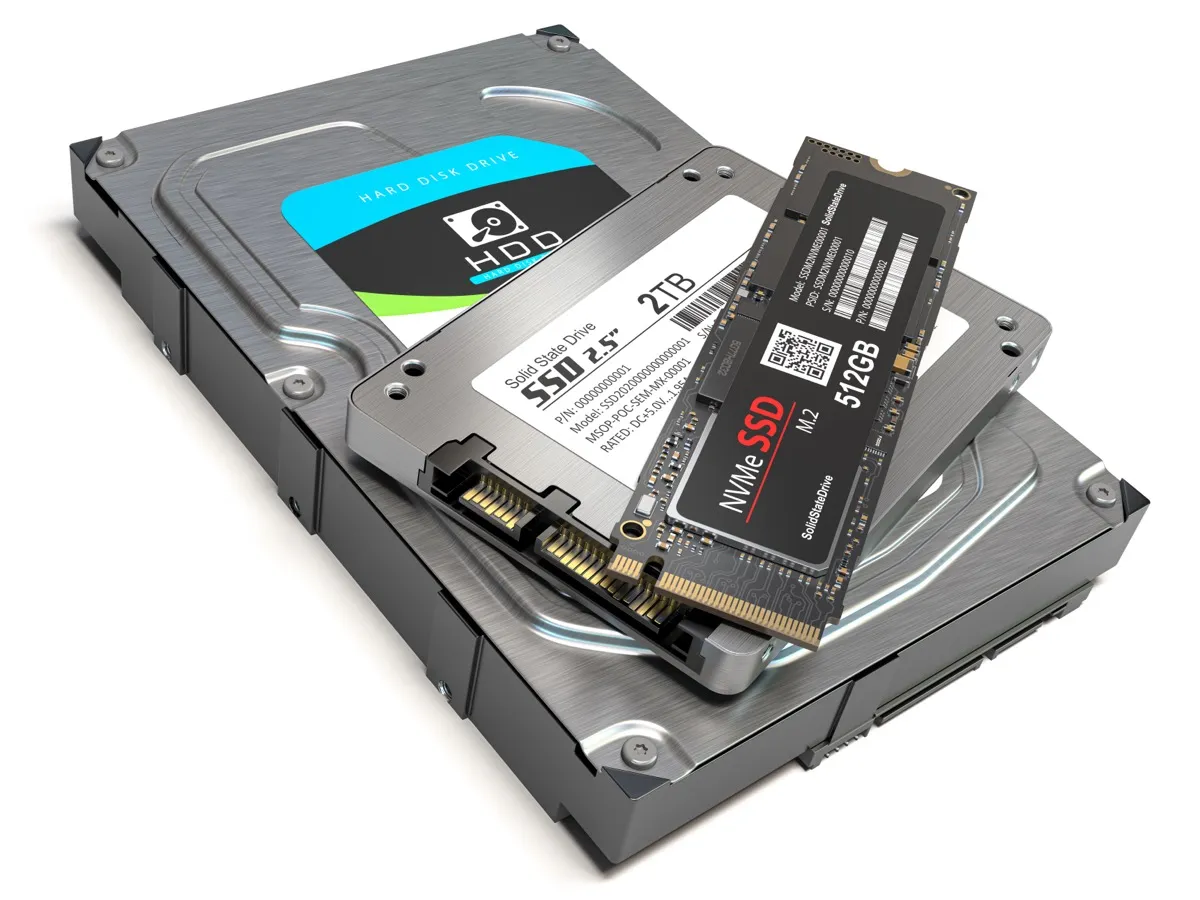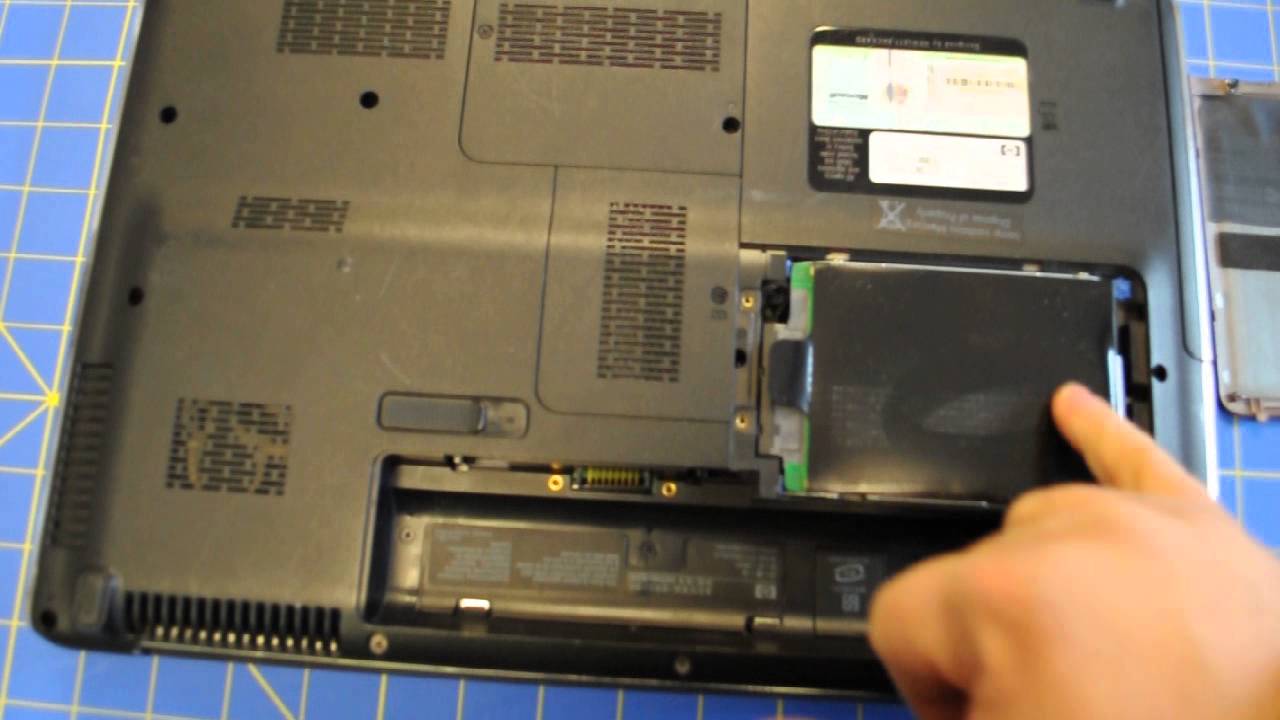Benefits of Running an SSD and HDD Together
Combining a solid-state drive (SSD) with a hard disk drive (HDD) in your computer setup can bring several benefits that optimize both speed and storage capacity. The SSD offers lightning-fast data access and boot times, while the HDD provides ample space for storing large files and programs. Here are some of the key advantages of running an SSD and HDD together:
- Speed and Responsiveness: The SSD delivers unparalleled speed, allowing your system to boot up in seconds and applications to load in a fraction of the time it takes with just an HDD. This means smoother multitasking and an overall snappier user experience.
- Cost-Effective Storage Solution: SSDs are typically more expensive per gigabyte than HDDs. Combining both drives provides a cost-effective approach to enjoying the benefits of fast storage while still having a large amount of affordable storage space.
- Expanded Storage Capacity: SSDs have limited capacities compared to HDDs, which can offer several terabytes of storage. With an SSD and HDD combo, you get the best of both worlds – the speed of an SSD for your operating system and frequently accessed applications, and the massive storage capacity of the HDD for storing files, documents, and less frequently used programs.
- Efficient Data Organization: By strategically allocating your files and programs between the SSD and HDD, you can optimize the performance and efficiency of your system. Keep your frequently used files, applications, and the operating system on the SSD, while storing larger files, such as videos, images, and archives, on the HDD.
- Extended Lifespan: SSDs are known for their durability and longevity due to their lack of moving parts. By offloading non-essential data onto the HDD, you can reduce the workload on the SSD, potentially extending its lifespan and ensuring optimal performance for longer periods.
In summary, combining an SSD and HDD in your computer setup provides a balanced approach to storage, offering the speed and responsiveness of the SSD while utilizing the vast storage capacity of the HDD. By effectively managing your data, you can enjoy faster boot times, shorter application load times, and ample storage space – all at an affordable price point.
Things to Consider Before Combining SSD and HDD
Before you embark on combining an SSD and HDD in your computer setup, there are a few important factors to consider. Taking these into account will ensure a seamless and optimal integration of both drives. Here are the key considerations:
- System Compatibility: Ensure that your system supports the simultaneous use of both an SSD and HDD. Check the motherboard specifications, available drive bays, and the necessary connectors, such as SATA or M.2 slots. Additionally, verify if your system’s BIOS settings need any adjustments to enable both drives.
- Storage Requirements: Assess your specific storage needs to determine the ideal capacities for the SSD and HDD. Consider the size of your operating system, frequently used applications, and other files you want to have on the SSD for faster access. The HDD should then provide enough space for storing other large files and applications.
- Power Consumption: SSDs generally consume less power than HDDs, which is advantageous for laptops and portable devices. However, it’s essential to consider the overall power requirements of your system and ensure that your power supply can support the combined usage of both drives.
- Data Backup and Recovery: Implement a reliable data backup strategy to safeguard your important files. Although SSDs are generally reliable, they can fail without warning. Having a backup system in place, whether through cloud storage or an external backup drive, is crucial to protect your data in case of drive failure.
- Operating System Installation: If you’re planning to install a fresh operating system, it’s advisable to first disconnect the HDD temporarily during the installation process. This prevents any conflicts or confusion during the setup, ensuring that the operating system is installed only on the SSD. After the installation is complete, reconnect the HDD and allocate storage accordingly.
- Heat and Cooling: SSDs generate less heat compared to HDDs, reducing the temperature inside your system. However, you should still ensure proper cooling for all components. Adequate ventilation and the use of fans or liquid cooling solutions help maintain optimal operating temperatures for both drives.
By considering these factors, you can effectively plan and integrate an SSD and HDD combination that suits your specific needs. It’s essential to choose compatible hardware, optimize storage allocation, and have a backup strategy in place to ensure a seamless and reliable experience with your hybrid storage setup.
Recommended Configurations for SSD and HDD Combo
When configuring an SSD and HDD combination, there are several recommended setups that can maximize performance and storage efficiency. These configurations allow you to make the most of the speed advantages of the SSD while utilizing the expansive storage capacity of the HDD. Here are some recommended configurations:
- OS and Applications on SSD, Data on HDD: In this configuration, install your operating system (OS) and frequently used applications on the SSD. This ensures fast boot times and quick application launches. Store large files, such as documents, videos, and photos, on the HDD. This setup is ideal for users who require quick access to their daily work applications while still having ample storage space for media files and larger data sets.
- OS and Applications on SSD, Selective Data on HDD: For users who have a large amount of data but still want the benefit of faster load times for specific applications, this configuration is recommended. Install the OS and frequently used applications on the SSD. Additionally, choose specific folders or directories that contain larger files or less frequently accessed data to be stored on the HDD. This way, you can still achieve faster performance for important applications while maximizing storage capacity for less critical files.
- Tiered Storage with SSD Caching: Another recommended configuration is to utilize SSD caching, which intelligently stores frequently accessed data on the SSD. This setup can be achieved through hardware solutions like Intel Smart Response Technology or software solutions like PrimoCache. By caching data on the SSD, you can experience faster access times for frequently used files, while the HDD still serves as the main storage repository for less frequently accessed data.
- RAID Configuration: If you require the utmost performance and redundancy, configuring SSD and HDD drives in a RAID setup can be beneficial. RAID configurations like RAID 0 (striping) can boost performance by combining the speeds of both drives. However, keep in mind that RAID configurations require careful planning and management, and data loss is a higher risk in case of drive failure.
- Hybrid Storage Solutions: Hybrid drives, also known as SSHDs, combine the speed of an SSD and the capacity of an HDD into a single drive. These drives automatically manage data placement, storing frequently accessed data on the SSD portion and less frequently accessed data on the HDD portion. This eliminates the need for manual storage allocation and offers a convenient plug-and-play solution for users seeking a balance between speed and capacity.
Remember, the recommended configuration depends on your specific needs and usage. Assess your requirements, available hardware, and budget to determine the best setup that maximizes performance, storage capacity, and convenience for your particular use case.
Step-by-Step Guide to Setting Up an SSD and HDD Combo
Setting up an SSD and HDD combo in your computer system requires a few straightforward steps to ensure a successful integration. Follow this step-by-step guide to configure your drives effectively:
- Prepare the Hardware: Ensure that you have both an SSD and an HDD that are compatible with your system. Check the drive dimensions, interface (such as SATA or M.2), and available drive bays. If needed, purchase any necessary cables or adapters to connect the drives.
- Back Up Your Data: Before making any changes to your system, it’s essential to back up your data to prevent any potential loss. Create a backup of important files, documents, and folders to an external storage device or cloud-based backup service.
- Mount the Drives: Install the SSD and HDD into their respective drive bays in your computer case. Secure them using screws or the appropriate mounting mechanism provided with your case. Make sure the connections are secure and that cables are properly routed.
- Connect the Cables: Connect the appropriate cables to each drive. For SATA drives, connect one end of the SATA data cable to the drive and the other end to an available SATA port on the motherboard. Connect the power cables to both drives, ensuring a secure connection.
- Enter BIOS Setup: Start your computer and enter the BIOS setup by pressing the designated key during the boot process (such as F2, Delete, or Esc). Navigate to the storage or drive configuration section of the BIOS.
- Set Boot Priority: In the BIOS, set the correct boot priority order to ensure that the SSD is the primary boot drive. Select the SSD as the first boot option, followed by the HDD. Save the changes and exit the BIOS.
- Install or Transfer the Operating System: If you are installing a fresh operating system, insert the installation media (such as a USB drive or DVD) and follow the on-screen prompts to install the OS. Make sure to choose the SSD as the installation destination. If transferring an existing operating system, use disk cloning software to clone the OS from the current drive to the SSD.
- Partition and Format the HDD: Once the OS is installed on the SSD, open Disk Management in Windows or Disk Utility on macOS. Locate the HDD and create a new partition or partitions based on your storage needs. Format the HDD with the desired file system.
- Assign Drive Letters: After partitioning and formatting the HDD, assign drive letters to the newly created partitions. This will enable easy access and management of the stored data.
- Optimize Storage Allocation: Determine how you want to allocate your files and programs between the SSD and HDD. Move frequently accessed files, applications, and the operating system to the SSD, and transfer larger files or less frequently used data to the HDD.
By following these step-by-step instructions, you can successfully set up an SSD and HDD combo, ensuring optimal performance and efficient storage management in your computer system.
Technical Considerations for Running SSD and HDD Together
Running an SSD and HDD together in your computer system requires taking certain technical considerations into account to ensure compatibility, performance, and longevity. Here are some important technical factors to consider when using an SSD and HDD combo:
- Drive Compatibility: Verify that your motherboard supports both types of drives and has the necessary connectors, such as SATA or M.2 slots, to accommodate the SSD and HDD. Additionally, ensure that your power supply has enough SATA power connectors for both drives.
- Drive Placement: Place the SSD and HDD in separate drive bays to avoid any potential electrical interference or physical damage. This ensures that both drives have adequate airflow and are properly secured to prevent vibrations that may impact performance.
- Drive Configuration: Prioritize the SSD as the primary boot drive by setting the correct boot order in the BIOS settings. This ensures that the computer boots from the faster SSD and takes advantage of its speed and responsiveness.
- SATA Port Selection: If possible, connect the SSD to the motherboard’s SATA port that supports the highest SATA revision (such as SATA III). This allows the SSD to operate at its maximum speed. Connect the HDD to any available SATA port.
- Drive Partitioning and Formatting: To allocate storage efficiently, partition and format both the SSD and HDD. Set up the SSD for the operating system and frequently used applications, while creating partitions on the HDD for storing data and less frequently accessed files.
- Trim Support: Confirm that your SSD and operating system support Trim, a technology that improves the SSD’s performance and longevity by optimizing the way data is stored and managed. Enable Trim for your SSD to ensure proper maintenance and longevity.
- Monitoring and Firmware Updates: Install the manufacturer’s software or utilities for your SSD and HDD. These tools provide monitoring capabilities, allowing you to keep track of drive health, performance, and available updates. Regularly check for firmware updates to ensure your drives are running at their best.
- Data Migration: If you’re migrating your operating system and files from an existing HDD to a new SSD, use reliable disk cloning or migration software to avoid data loss or corruption. Follow the software instructions carefully to ensure a successful and error-free migration process.
- Backup and Data Redundancy: Implement a backup strategy to protect your data. SSDs and HDDs can fail, and having a backup ensures that your important files are safe. Use an external storage device or cloud-based backup service to regularly back up your data.
- System Optimization: Configure your operating system settings for optimal performance with an SSD and HDD combo. Disable unnecessary startup programs, enable TRIM support, optimize power options, and regularly run disk cleanup and defragmentation utilities to keep both drives running smoothly.
By considering these technical aspects, you can ensure a successful integration and long-lasting performance when running an SSD and HDD together. These considerations will help you reap the benefits of speed, storage capacity, and reliability that come with combining both drive types in your computer system.
Data Management Tips for SSD and HDD Combo
Effectively managing your data is crucial when running an SSD and HDD combo in your computer system. By following these data management tips, you can optimize storage allocation, ensure data integrity, and maintain the overall performance of your drives:
- Allocate Storage Wisely: Carefully consider which data and applications should be stored on the SSD and HDD. Keep frequently accessed files, the operating system, and critical applications on the SSD for fast access. Store larger files, such as media and archives, on the HDD to maximize storage capacity.
- Utilize Symbolic Links or Junction Points: Symbolic links or junction points allow you to redirect specific folders or directories from their original location on the SSD to the HDD. This enables you to free up valuable SSD space without impacting the accessibility or functionality of the files.
- Regularly Clean Up and Organize Files: Regularly remove unnecessary files, temporary files, and duplicate files from both the SSD and HDD to free up disk space. Keep your files organized by creating folders and subfolders to ensure easy navigation and retrieval.
- Enable Automatic Backups: Set up automatic backups to protect your important files and data. Use backup software or cloud storage solutions to automatically back up your data to an external drive or to the cloud, ensuring that you have an extra layer of data protection in case of drive failure.
- Implement File Synchronization: Utilize file synchronization tools to keep specific folders or directories on your SSD and HDD in sync. This ensures that any changes or modifications made to files in one location are automatically reflected in the other, making it easier to access and work with your data.
- Regularly Monitor Drive Health: Utilize drive monitoring software provided by the drive manufacturers to keep an eye on the health and performance of your SSD and HDD. This allows you to be proactive and address any potential issues before they lead to data loss or drive failure.
- Manage Temporary and Cache Files: Adjust the settings of software applications to save temporary files and cache to the HDD instead of the SSD. Temporary files can accumulate and take up valuable space on the SSD, impacting its overall performance.
- Consider Synergy with Cloud Storage: Use cloud storage solutions to complement your SSD and HDD setup. Store less frequently accessed files in the cloud, which not only saves local storage space but also provides an additional level of backup and accessibility for your data.
- Regularly Update Firmware and Drivers: Stay up to date with the latest firmware and drivers for your SSD and HDD. These updates often include important performance and reliability improvements, ensuring that your drives continue to operate optimally.
- Perform Regular Maintenance: Regularly perform disk cleanup, defragmentation, and error checking on both the SSD and HDD. These maintenance tasks help optimize performance, free up disk space, and identify any potential issues that require attention.
By implementing these data management tips, you can make the most of your SSD and HDD combo, ensuring efficient storage allocation, data integrity, and overall system performance.
Common Issues and Troubleshooting for SSD and HDD Combination
While combining an SSD and HDD in your computer system offers numerous benefits, there can be some common issues that you may encounter. Understanding these issues and knowing how to troubleshoot them will help you maintain a smooth and reliable operation of your SSD and HDD combination. Here are some common issues and troubleshooting tips:
- Drive Not Recognized: If either the SSD or HDD is not being recognized by your system, double-check the connections and ensure they are properly connected. Try using different SATA ports or cables to rule out any issues with the connections. If the drive is still not recognized, it could be a compatibility or hardware issue that requires further investigation or assistance.
- Slow Performance: If you notice a decrease in performance on either the SSD or HDD, it could be due to fragmentation or excessive disk usage. Run a disk cleanup and defragmentation utility to optimize the drives’ performance, especially the HDD. Additionally, ensure that TRIM is enabled on the SSD to maintain its performance over time.
- Data Corruption or Loss: Data corruption or loss can occur due to various reasons, including drive failure, power interruptions, or software issues. Regularly back up your important data to prevent permanent loss. If you experience data corruption, attempt to recover the data using reliable data recovery tools or professional data recovery services.
- Incompatibility Issues: Incompatibility issues can arise when combining different drive types, motherboard types, or firmware versions. Ensure that all drives and hardware components are compatible with each other and have the latest firmware updates installed. Check for compatibility lists or consult with the manufacturer’s support if needed.
- Insufficient Power Supply: Insufficient power from your power supply unit (PSU) can cause intermittent drive failures or system crashes. Verify that your PSU can provide enough power to support both the SSD and HDD. Consider upgrading to a higher wattage PSU if necessary.
- Noise or Vibration: Excessive noise or vibration can indicate a mechanical issue with either the SSD or HDD. Check that the drives are properly secured and that any mounting screws are tightened. If the noise or vibration persists, it may be a sign of a failing drive, and it is recommended to back up your data and replace the affected drive.
- Drive Overheating: SSDs typically generate less heat compared to HDDs. However, it’s important to monitor the temperature of both drives to prevent overheating. Ensure proper airflow in your computer case and consider adding additional fans or cooling solutions if necessary.
- Interference with Boot Process: If you’re experiencing issues with the boot process, such as the system not booting or booting slowly, double-check the boot order in the BIOS settings. Ensure that the SSD, which contains the operating system, is set as the primary boot drive.
- Failure to Install or Recognize Operating System: If you’re experiencing difficulties with installing or recognizing the operating system on your SSD, ensure that the SSD is properly connected and initialized. You may need to format the SSD and perform a clean installation of the operating system. If issues persist, consult the operating system’s documentation or seek technical support.
- Drive Failure: Drive failure can occur with both SSDs and HDDs. Keep an eye on the health and performance of your drives using drive monitoring software provided by the manufacturers. Regularly back up your important data to mitigate the risk of permanent loss in the event of a drive failure.
If you encounter any of these issues, it’s important to approach troubleshooting with caution. Perform research, consult the manufacturer’s support, or seek professional assistance to ensure the problem is resolved effectively, and your SSD and HDD combo continues to operate optimally.
How to Optimize Performance with an SSD and HDD Combo
To maximize the performance of your SSD and HDD combo, it’s important to implement certain optimization strategies. These techniques will help you fully leverage the speed benefits of the SSD while utilizing the storage capacity of the HDD effectively. Here are some tips to optimize the performance of your SSD and HDD combination:
- Install the Operating System on the SSD: Installing the operating system (OS) on the SSD will provide a significant boost in performance. The SSD’s fast read and write speeds allow the OS to boot up quickly, resulting in a snappier overall system experience.
- Allocate Frequently Used Applications to the SSD: Install frequently used applications, such as web browsers, productivity tools, and image editing software, on the SSD. This will ensure quick access and faster application load times, enhancing your workflow efficiency.
- Keep the SSD Firmware Up to Date: Regularly check for firmware updates from the manufacturer and install them as needed. Firmware updates often include bug fixes, performance improvements, and compatibility enhancements, ensuring optimal performance and stability of your SSD.
- Avoid Overfilling the SSD: It’s best to leave some free space on your SSD to maintain optimal performance. Overfilling the drive can lead to decreased performance. Aim to keep at least 10-20% of the SSD’s total capacity free for efficient operation.
- Use SSD for Virtual Memory: Configure your system to use the SSD for virtual memory or page file usage. This allows the system to utilize the faster SSD for virtual memory operations, resulting in improved performance when performing memory-intensive tasks.
- Store Media and Large Files on the HDD: Offload large files, such as videos, photos, and archived data, to the HDD. These files don’t require the speed of the SSD and can be accessed efficiently from the HDD, allowing the SSD to focus on handling critical system tasks and frequently used programs.
- Utilize SSD Caching Technology: If your system supports it, consider using SSD caching technology. This technology utilizes a portion of the SSD as a cache for frequently accessed data, resulting in improved performance for both read and write operations. Check your motherboard specifications or consider third-party caching software for this feature.
- Manage Startup Programs: Review and disable unnecessary startup programs that consume system resources and slow down boot times. This allows your system to boot up quickly, benefiting from the SSD’s faster access times and higher data transfer rates.
- Regularly Defragment the HDD: Although SSDs don’t require defragmentation, traditional HDDs can benefit from regular defragmentation. Defragmenting the HDD organizes the data for faster access, resulting in improved performance when accessing files stored on the HDD portion of your setup.
- Use RAID Configurations (Optional): If you require faster performance or data redundancy, consider setting up a RAID configuration using your SSD and HDD. RAID 0 can combine the speeds of both drives, while RAID 1 provides data redundancy. However, be aware that RAID configurations require careful setup and may increase the risk of data loss in case of a drive failure.
By following these optimization techniques, you can fully harness the benefits of an SSD and HDD combo, achieving the best possible performance and storage efficiency for your computer system.
Future Technologies and Trends for Hybrid Storage Solutions
As technology continues to evolve, hybrid storage solutions combining SSDs and HDDs are also expected to undergo advancements and embrace new technologies. Several exciting trends and future technologies are emerging in the field of hybrid storage. Here are some developments to watch for:
- Emergence of PCIe Gen 4 and NVMe: PCIe Gen 4 and Non-Volatile Memory Express (NVMe) technologies offer even faster data transfer speeds than their predecessors. With faster read and write performance, these technologies will further enhance the speed and responsiveness of SSDs, pushing the boundaries of hybrid storage solutions.
- Tiered Storage with Artificial Intelligence (AI): Artificial Intelligence algorithms will play a vital role in optimizing tiered storage systems. AI can intelligently analyze data usage patterns and automatically move frequently accessed data to the faster SSD tier, while less frequently accessed data remains stored on the HDD tier. This approach maximizes the performance and utilization of both drives.
- Enhanced Data Deduplication and Compression: Advanced data deduplication and compression techniques will continue to improve storage efficiency. These technologies identify and eliminate duplicate or redundant data, reducing storage requirements and improving overall performance. By combining these techniques with hybrid storage solutions, users can maximize their storage capacity while maintaining high system performance.
- Development of QLC NAND Flash: Quad-Level Cell (QLC) NAND Flash technology offers higher storage densities at a lower cost compared to traditional Multi-Level Cell (MLC) and Triple-Level Cell (TLC) NAND. As QLC technology evolves, we can expect to see larger capacity SSDs becoming more affordable, making them an attractive option for hybrid storage solutions.
- Advancements in HDD Technology: HDD manufacturers are continually improving the performance and capacity of their drives. Innovations such as Heat-Assisted Magnetic Recording (HAMR) and Shingled Magnetic Recording (SMR) are being applied to increase the density and storage capability of HDDs. These advancements will further enhance the storage capacity and cost-effectiveness of hybrid storage solutions.
- Hybrid Storage in Cloud Environments: Hybrid storage solutions are gaining popularity in cloud environments. These solutions combine the benefits of local SSDs for high-performance storage with cloud-based storage for cost-effective scalability and data backup. The integration of hybrid storage with cloud technology allows for more flexible and efficient data management in the cloud era.
- Solid-State Hybrid Drives (SSHDs): Solid-State Hybrid Drives, or SSHDs, combine the speed of an SSD with the capacity of an HDD in a single drive. As SSHD technology advances, we can expect to see improved performance, increased capacities, and better integration with hybrid storage setups. SSHDs provide a plug-and-play solution for users seeking a balance between speed and capacity.
- Advancements in Caching Technologies: Caching technologies, such as Intel Smart Response Technology and AMD StoreMI, will continue to evolve. These technologies intelligently store frequently accessed data on the SSD portion, improving overall system performance. As caching algorithms become smarter and more efficient, the speed and responsiveness of hybrid storage systems will increase.
- Improved Endurance for SSDs: Endurance is a crucial factor for SSDs, as they have a finite lifespan based on the number of write cycles. Advances in NAND flash memory and controller technologies are expected to enhance the endurance of SSDs, resulting in longer-lasting drives that can handle intensive workloads more effectively.
These future technologies and trends hold immense potential to further enhance hybrid storage solutions, bringing greater performance, capacity, and efficiency to users. As these advancements continue to unfold, hybrid storage will remain a resilient and adaptable solution for meeting the growing storage demands of modern computing environments.
Conclusion
Incorporating a solid-state drive (SSD) and a hard disk drive (HDD) together in your computer system offers a balance of speed and storage capacity. By leveraging the benefits of both drives, you can experience faster boot times, quicker application launches, and ample storage space for your files and programs. Throughout this guide, we explored the various aspects of running an SSD and HDD combo.
We discussed the benefits of combining an SSD and HDD, including increased speed and responsiveness, cost-effective storage solutions, expanded storage capacity, efficient data organization, and extended lifespan for the SSD. We also provided recommendations for configurations, step-by-step setup instructions, technical considerations, data management tips, common issues and troubleshooting, and performance optimization strategies.
Looking ahead, hybrid storage solutions are poised to continue evolving with the emergence of technologies such as PCIe Gen 4 and NVMe, AI-driven tiered storage, advanced data deduplication and compression, QLC NAND Flash, enhanced HDD technology, and cloud integration. These advancements will further enhance the performance, storage capacity, and efficiency of hybrid storage solutions, providing users with more robust and flexible options.
Ultimately, whether you are a power user, a gamer, or a professional requiring fast access to critical applications, running an SSD and HDD together provides a versatile and efficient storage solution. By carefully considering the hardware compatibility, effectively managing data allocation, and staying informed about future technologies, you can optimize the performance and longevity of your hybrid storage setup.
Now it’s time to embark on your journey of combining an SSD and HDD in your computer system. Follow the guidelines provided, tailor the setup to your specific needs, and enjoy the benefits of speed, capacity, and performance that hybrid storage can offer.









